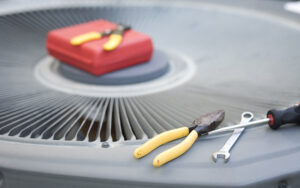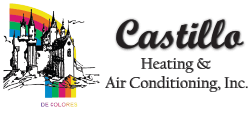Central Heating Systems For Your Home
When it comes to your heating and air conditioning system, there is no “one size or one type fits all” approach. With technological advances over the years, and new environmental regulations in effect, homeowners have more options to look at when it comes to finding a central heating system that works for their homes. The most common types to consider include gas furnaces, heat pump systems, and mini-split systems.
Gas Furnaces
A gas furnace is a central heating unit that uses burners and gas as fuel to heat a building. Cooler air is moved past the heat exchanger in the unit. The heated air is then moved to different rooms and areas of the building or home through a duct system. Since the furnaces burn fuel for heat, the exhaust, called flue gas, is safely vented into the outside air through a flue vent. Gas furnaces are usually connected to a split air conditioning system to make a complete heating and air conditioning system for your home or building.
Pros and Cons
With any system, there are benefits and drawbacks. Here are some pros and cons for gas furnaces as a central heating system:
Pros:
-
Use less electricity. Since gas furnaces use a gas fuel to warm the air, they use less electricity than other types of central heating
systems. Electricity is mostly used to power the motors which move air through the unit and remove the exhaust. - Possible lower upfront cost. Generally, getting a new gas furnace can be a cheaper option when looking at upfront costs on new heating systems. It is always in your best interest to have a licensed reputable contractor assess the condition of your gas furnace to see if this is a realistic option for you.
- Heating in low outside temperatures. Unlike other types of heating systems, gas furnaces do not draw heat from the outside air to heat the air inside a home or building. Therefore, if the outside temperature reaches a low point, it won’t affect the way your furnace heats the air for your home.
Cons:
- Limited options in California. As of October 1, 2019, a regulation from South Coast Air Quality Management District states that gas furnaces are required to be “low NOx (nitrous oxide)” in some areas in California. This is part of a larger plan to move towards environmentally friendly and sustainable fuel sources. Not all manufacturers offer low NOx furnaces in their product lines and have instead moved to zero-emission units rather than low-emission units. This means that if you live in these areas, your gas furnace options are limited to those manufacturers that produce low NOx furnaces.
- Carbon monoxide risks. Carbon monoxide is a colorless and odorless gas that is part of the flue gas produced by gas furnaces. It can be deadly if inhaled in large quantities. Gas furnaces are safe. When properly installed and maintained, you can further minimize the risk of carbon monoxide getting into the inside air. Having a carbon monoxide detector installed in your home is also wise. So while there is a minimal risk of carbon monoxide poisoning, it is something to keep in mind.
- Extra utility bills. Since gas furnaces use both electricity and gas fuel to operate, they will contribute to the cost of both utility bills when you use them. So while it’s possible they can save on electricity, they will still add to the gas bill.
Heat Pumps
Heat pump systems are a central heating and air conditioning system that uses electricity to remove heat from the air and move it either inside or outside, depending on whether heating or cooling is needed. They consist of two main components: an indoor air handler and an outdoor unit that has a compressor. The compressor circulates refrigerant and absorbs and releases heat where needed. Heat is released indoors for heating, and outdoors for cooling. Heat is still present in the air even when it’s cold outside, and that heat is absorbed and distributed inside the home or building. So, even if it feels cold outside, it can still heat the inside of your home well.
Pros and Cons
Heat pumps have a different way of heating your home from gas furnaces, so the benefits and drawbacks are also different. Here’s what you need to know about heat pumps.
Pros:
- Environmentally friendly. Not only are heat pumps a zero-emission system, they also grant the opportunity to use more environmentally friendly and sustainable fuel sources since they do not use any gas fuels and only use electricity to operate.
- No carbon monoxide risks. Since heat pumps do not use gas fuels, they do not emit any exhaust or harmful gases including carbon monoxide. While the risk of carbon monoxide poisoning with gas furnaces is minimal, the risk with heat pumps is zero.
- Versatility. With heat pump systems, the same equipment is used for both heating and cooling your home. Heat pumps have a reversing valve which allows the system to reverse the refrigeration cycle and move heat either inside your home to keep you warm, or outside your home to keep you cool.
Cons:
- Heating in low outside temperatures. Since heat pumps draw heat from the outside air while in heat mode, it is possible for the system to not work as well in below freezing temperatures. In these cases a secondary heat source might be needed. It is also why having a load calculation performed by a licensed contractor is essential when considering installing a heat pump system in your home or building.
- Uses more electricity. While heat pump systems are energy efficient, they do use more electricity than gas furnaces. As a result, you could have higher electricity bills with a heat pump as your central heating system. However the higher efficiency of the system could balance that cost in the long run.
- Possible higher upfront cost. Generally heat pump systems can be slightly higher in cost initially when compared to a gas furnace and split air conditioning system. Depending on your area and contractor or manufacturer, there may be rebates or other incentives available to you to help offset the cost.
Mini-Split Systems
While mini-split systems are not technically considered “central” heating systems, they can be a great option to heat your home or building. Essentially, a mini-split system is a smaller version of a heat pump system. Instead of a larger indoor air handler and outside unit, mini-split systems have a smaller outdoor unit and an indoor unit mounted inside the conditioned space. These are systems you typically find in places like hotel rooms. Generally these systems are ductless, meaning they do not use a duct system to distribute air throughout the home or building, and instead blow air directly into the room or space from the indoor unit. However some models do have the option or ability to attach ducts.
Pros and Cons
Though they are technically heat pump systems and generally have the same pros and cons, mini-splits do have their own unique benefits and drawbacks.
Pros:
- Control over individual rooms and/or spaces. Many models now offer the option to connect multiple indoor units to one outdoor unit. Since each indoor unit can be controlled individually, this gives the option to have only one unit on at a time, or only specific units on at a time.
- Efficiency. Ducts account for 30% of energy consumption with space conditioning. Since these can be used without ducts, mini-splits can avoid energy loss and give you a much more energy efficient heating system.
- Non-invasive installation. Unlike both regular heat pumps and gas furnaces, which can require a lot of space and be more invasive, mini-splits are fairly simple to install and give you the ability to customize what areas in your home you want to be individually heated.
Cons:
- May not be aesthetically pleasing. The drawback from having a ductless system is needing the indoor unit mounted inside the conditioned space. Usually the best place for these units to be installed is a centralized area in the room as well, which may not be aesthetically pleasing.
- Indoor air quality. With mini-split systems, there is not much ability to install air purification systems like those available to heat pumps and gas furnace/split air conditioning systems. If having a quality air purifier is necessary, this may not be the best option.
- Higher upfront cost. With the added flexibility and customizability comes added upfront cost. The higher efficiency and possible rebates available however can help offset the cost and make it a wise investment in the long run.
Which Option is Best For You?
While every heating system type has its pros and cons, deciding which system is best for you and your home and building is ultimately up to you. Having a licensed reputable HVAC contractor assess your home or building, evaluate your needs, consider your budget, and perform a load calculation is the best way to make sure you get the most accurate estimates and options laid out
for you.
If you have any questions about your heater, or would like one of our experienced technicians to assess your system, you can contact us at (951) 301-4452 or at info@castillohvac.net.
You May Also Like

3 Benefits of Boosting the Air Quality in Your Home
Residents of Temecula, CA, can’t afford to neglect the indoor air quality (IAQ) in their homes. IAQ solutions can virtually eliminate the… Continue Reading 3 Benefits of Boosting the Air Quality in Your Home…

Troubleshooting Your Ductless Mini-Split in Lake Elsinore, CA
If your ductless mini-split is acting up at your home in Lake Elsinore, CA, you can do simple troubleshooting to get a… Continue Reading Troubleshooting Your Ductless Mini-Split in Lake Elsinore, CA…

3 Signs You Need Heat Pump Repairs Today in Murietta, CA
The relatively mild climate of Murietta, CA, makes a heat pump a smart choice for indoor heating and cooling. Heat pumps need… Continue Reading 3 Signs You Need Heat Pump Repairs Today in Murietta, CA…
